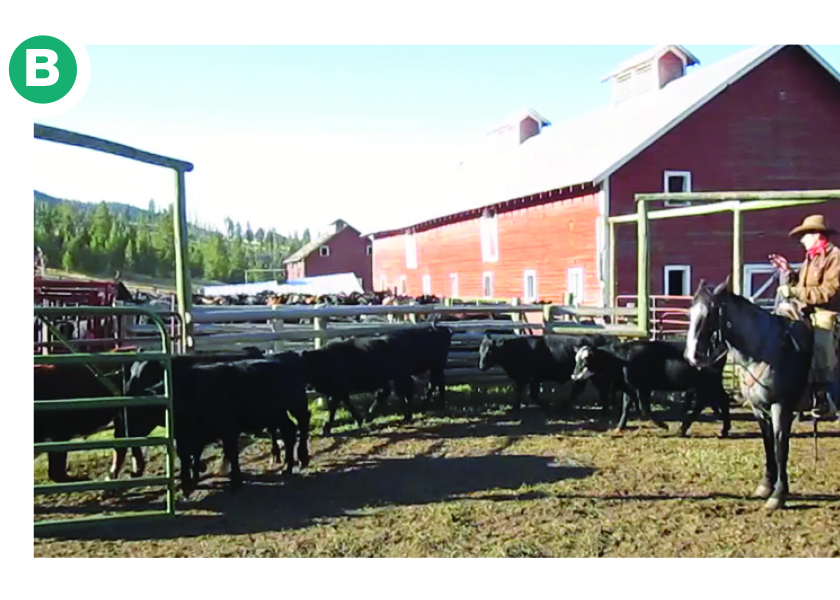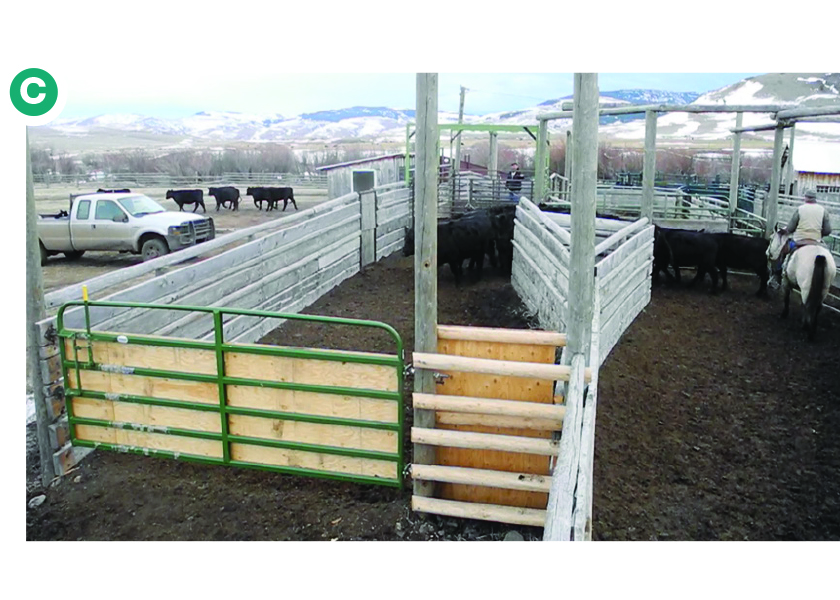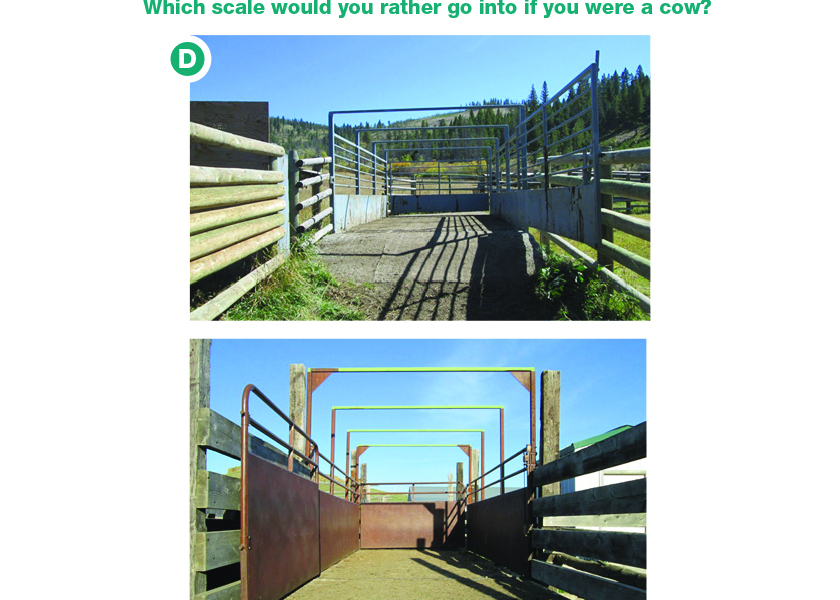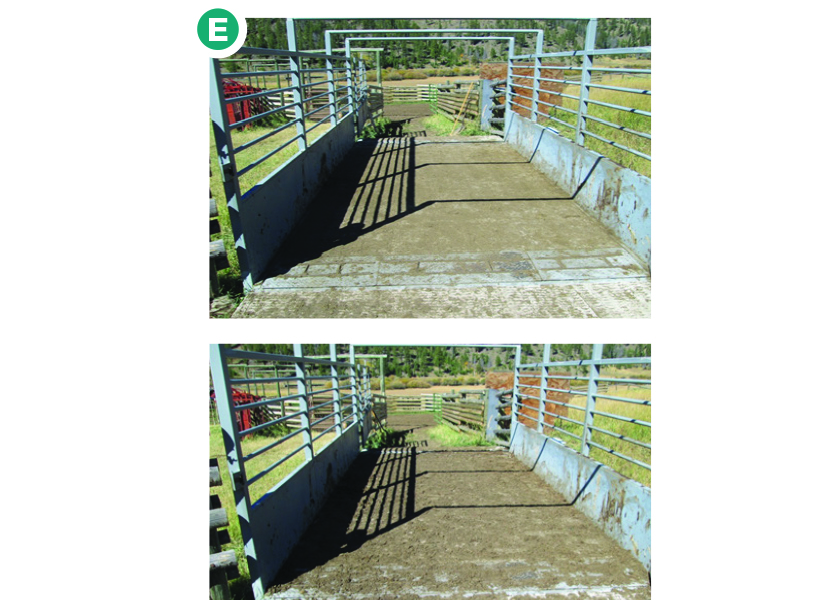Scale Loading

It’s surprising to us now, but producers often have difficulty loading their scales, and we were no exception before learning Bud Williams’ low-stress livestock handling.
Conventionally, people think the reason cattle don’t want to go on the scale is because they are afraid of it. Bud asserted that they are not afraid of the scale; what they are afraid of is what we do to them to get on it. If we do it properly, they will willingly go onto the scale.
In this article we will discuss eight tips for low-stress scale loading. These tips will make it not only easier on the cattle and handlers, but they will increase efficiency. Efficiency is important because scale loading delays cost by about $20 per minute in unnecessary shrink.
Tips for low-stress scale loading
1 Prepare your animals with a dry run (rehearsal). If we want our production events as easy and low stress on our animals (and on us) as possible, it’s important to prepare them for future production events, such as weighing. Conventionally, we think our animals should simply do whatever we want, like go across the scale for the first time. We forget this is a foreign object and experience for them, and they do not know what is going to happen, if there’s a way out or if they will be safe.
From the low-stress perspective, we understand it is important to the animals to be introduced properly to whatever they are going to have to do in their human-dominated world. So, in the instance of weighing, we can do a “dry run” across the scale at an earlier convenient time; this might be when we’re trailing by our corrals, working with our freshly-weaned calves or upon receipt of new cattle (see Figure A, above).
Figure B shows how easy it is on shipping day to draft animals onto the scale as a result of doing the dry run at the earlier date. This makes scale loading efficient, easy, even fun, and there’s no need for extra help.

2 Don’t overload the scale. Conventionally, we think crowding animals on the scale will make it faster with consequent less shrink, but our experience is the opposite — bringing fewer animals is smoother and easier, hence faster. Also, it’s less stressful on the animals; they really don’t like being crowded, and the less stress the less shrink.
3 Bring ‘em with good movement. If we bring the cattle with good movement — which is when they willingly go where we want (i.e., their minds are going forward) — they’ll sail right onto the scale. This might involve some momentum, and not stopping to close a gate behind you because you break contact with the animals and risk losing movement to the point where the animals stop, turn and want to go back.
4 Change the animal flow. Consider staging and drafting the cattle out of a different pen or bringing them into the scale from the opposite side, or run all the animals to be weighed across the scale (i.e., a dry run) to a holding pen, then bring drafts back to be weighed, so they are going back where they came from.
5 Don’t store cattle in alleyways. No matter how careful we are, storing animals in alleyways is stressful on them. Therefore, it’s better to store them in pens and draft out of there. Someone could be coming with the next draft from the holding pen as the ones on the scale are just about to leave.
6 Bring what you got. A common mistake is they want 15 for a scale load, and you only have 14 going, so you go back to get one more and the 14 stop. Bud asks, “What difference does it make how many you weigh? You’re going to weigh ‘em all anyway.” Similarly, if one hesitates just go with the ones you have and dump it, because once you stop to get that one you’ve lost the movement and now you have to fight it.
7 Retrofit a BudBox. BudBoxes work extremely well and are usually easy to retrofit (see Figure C).

8 Open sides. In the following photos (see Figure D) which scale would you rather go into if you were a cow?

We want to make an important point with the next two photos (see Figure E): When we handle our animals properly there’s very little stress and, consequently, shrink is minimized because there’s less anxiety-induced dunging.

Conclusion
By following these eight tips for success during scale loading you can turn what is often a high-stress experience for the cattle (and people) into a low-stress one.
Whit Hibbard is a fourth- generation Montana rancher and the editor of Stockmanship Journal. Find more at stockmanshipjournal.com.
Dawn Hnatow is Bud Williams’ senior student and manages two cattle ranches in Texas. Find more at cattleupstockmanship.com.







